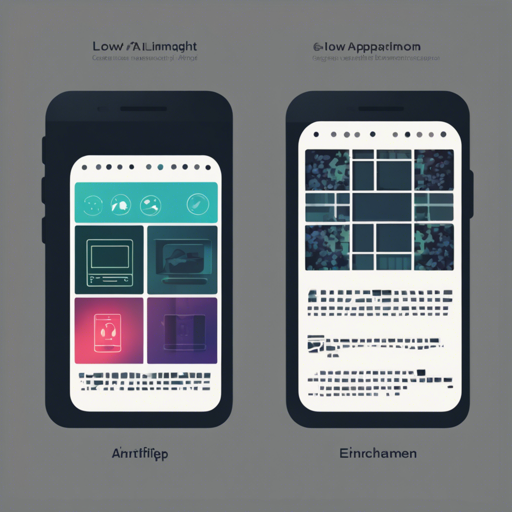In this blog post, we will explore how to create a simple yet powerful lowlight enhancement application using Streamlit, a popular framework for building web applications with Python. This application improves images captured in low-light conditions without the need for paired images to train the model.
Getting Started
Before we dive into the code, make sure you have Streamlit installed. You can do this using pip:
pip install streamlitOnce that’s set up, we’re ready to build our lowlight enhancement app!
Understanding the Code
Let’s break down the code snippet provided and visualize its functionality as though we are creating a recipe for a delightful dish.
Imagine you are a chef; the process of enhancing low-light images is akin to crafting a visually appealing dish from basic ingredients.
- **Ingredient List**:
- Streamlit – This is your chef’s knife, essential for slicing through the complexities of web app development.
- Image Library – Think of this as your spice cabinet, ready to add flavor to your low-light photography.
- **Recipe Steps**:
- First, you start by defining the main function as your cooking station. This is where all the magic happens.
- Next, set the stage by giving your app a title – “Lowlight Enhancement” – akin to setting the ambiance in a restaurant.
- Introduce your dish by explaining that it’s a simple app with fantastic performance (like a quick-cooking recipe!) and confirm it doesn’t require paired images, highlighting its convenience.
- Then, list out the capabilities. Mention the model’s performance of processing images at an astonishing rate of 100011 FPS on just a single GPU/CPU, ensuring everyone knows this dish will be ready in the blink of an eye.
- Use a file uploader to accept low-light images; it’s like welcoming guests to bring their own ingredients to your culinary experience.
- If guests do bring their images, you’ll reveal the original dish in a beautifully arranged presentation – the original lowlight image alongside its enhanced version.
The Code Implementation
Here’s the complete code snippet for the lowlight enhancement app:
def main():
st.title("Lowlight Enhancement")
st.write("This is a simple lowlight enhancement app with great performance and does not require paired images to train.")
st.write("The model runs at 100011 FPS on single GPU/CPU on images with a size of 1200*900*3")
uploaded_file = st.file_uploader("Lowlight Image")
if uploaded_file:
data_lowlight = Image.open(uploaded_file)
col1, col2 = st.columns(2)
col1.write("Original (Lowlight)")
col1.image(data_lowlight, caption="Lowlight Image", use_column_width=True)Troubleshooting Tips
If you encounter any issues while building or running your app, consider the following troubleshooting steps:
- Ensure all libraries are properly installed. A missing library can throw errors during execution, similar to missing an ingredient when cooking.
- Check the file format of the uploaded images. Supported formats ensure the best results.
- If the application doesn’t run as expected, verify your Python version compatibility with Streamlit.
- Restart the Streamlit server; sometimes, simply refreshing your cooking station can resolve minor issues.
For more insights, updates, or to collaborate on AI development projects, stay connected with fxis.ai.
Wrapping Up
And there you have it! With just a few ingredients and instructions, you can create a tantalizing lowlight enhancement application that showcases images captured in dim light. This not only enhances the visuals but also provides a delightful experience for users. At fxis.ai, we believe that such advancements are crucial for the future of AI, as they enable more comprehensive and effective solutions. Our team is continually exploring new methodologies to push the envelope in artificial intelligence, ensuring that our clients benefit from the latest technological innovations.

